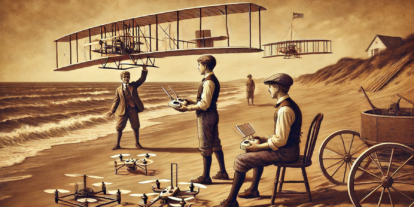As more and more users have been using the Kittyhawk platform, we’ve received many great questions from our recreational users and enterprise customers about the many edge cases of operating a drone in the national airspace system (NAS). We want to shine some light on some of the questions facing users operating on our platform, and those operating commercial drones in general.
One question we get a lot is a variation of the following issue: “My airspace app tells me it’s safe to fly at my chosen location, but when I arrive at that location, I see something on the ground that wants to prevent me from operating there (e.g. a “NO DRONE” sign). Why does this happen, and is it legal?”
The Role of State and Local Laws on Drone Operations
The question of “Am I allowed to fly here?” is really two questions. The first question is am I allowed to operate in the airspace I want to operate in? The second question is am I allowed to launch and/or land from a specific point on the ground?
The short answer to this question is that the FAA and federal laws control your ability to operate in the NAS, while state and/or local laws control your ability to perform certain activities on the ground. This is why you may see on your airspace app that the airspace is clear to fly but there may be additional state and/or local laws that prevent you from launching or landing from specific areas on the ground.
In the United States, the Constitution generally describes the powers and limitations of the federal government. The Tenth Amendment says that those powers not explicitly granted to the federal government are reserved for the states or the people. In practice, this leaves many significant powers to the states, rather than the federal government. Key areas of law that states tend to control are zoning, land-use, nuisance, privacy, and others. This is how many cities and states are allowed to regulate some aspects of drone use – they don’t have much, if any, authority over drones in the air, but they do have authority over how people use the land to operate their drone and to stop the use of drones when it has a negative effect on the public.
Where is This Information Available?
For interpreting airspace, use Kittyhawk or B4UFLY for visual representations of official FAA data sources like airspace and TFRs.
For interpreting your ability to launch and land from the specific point on the ground that you want to operate from, there are no official FAA data sources, since this is a state/local question that varies by location. We are working on ways to make this information accessible on Kittyhawk, but currently the best place to go is a local resource like a city website or a parks department website. In California, for example, the CA State Parks website lays out their rules, as does the City of San Francisco. The Drone Girl wrote a good article on this topic last year, focused on San Francisco.
What happens if I’m approached by the FAA or local law enforcement?
We could write an entire post about “ramp checks”, where an FAA representative, usually from a local Flight Standards District Office (FSDO), performs an unscheduled compliance check of a pilot in the field. Some industry publications have written articles on the topic with great details of how to best interact with representatives of the FAA if you are ramp checked. It is worth noting that 14 CFR Part 107.7 (a) details the documentation that a Remote Pilot may be required to present to FAA representatives, such as aircraft registration, maintenance logs, or any authorizations or waivers granted (including LAANC).
If approached by local law enforcement, it is important to remember they may not be familiar with drones or the nuances in the rules, and their focus is likely to be concerned with public safety and ensuring that operations are not endangering people on the ground. For example, the FAA has provided resources to local law enforcement to help them understand their authority, guide their interactions with drone operators in the field, and how to communicate with the FAA.
Other Considerations
The purpose of the operation (e.g. whether recreational or commercial) can also factor in determining whether a specific location is safe to operate from. For example, many cities or parks have different rules for commercial operations, such as requirements to get a film permit.
Some states (e.g. North Carolina and Minnesota) have specific regulations relating to the use of commercial drones in their state. North Carolina is probably the most prominent state with their own drone regulations. You can learn more about the state-specific regulations in North Carolina here and here, and Minnesota here.
Andrew Elefant
Andrew Elefant is the Director of Legal & Policy at Aloft, an enterprise drone software company. Andrew is a licensed attorney in California. He is also an experienced Private Pilot with Instrument and Multi-Engine ratings, as well as a certificated Remote Pilot.



